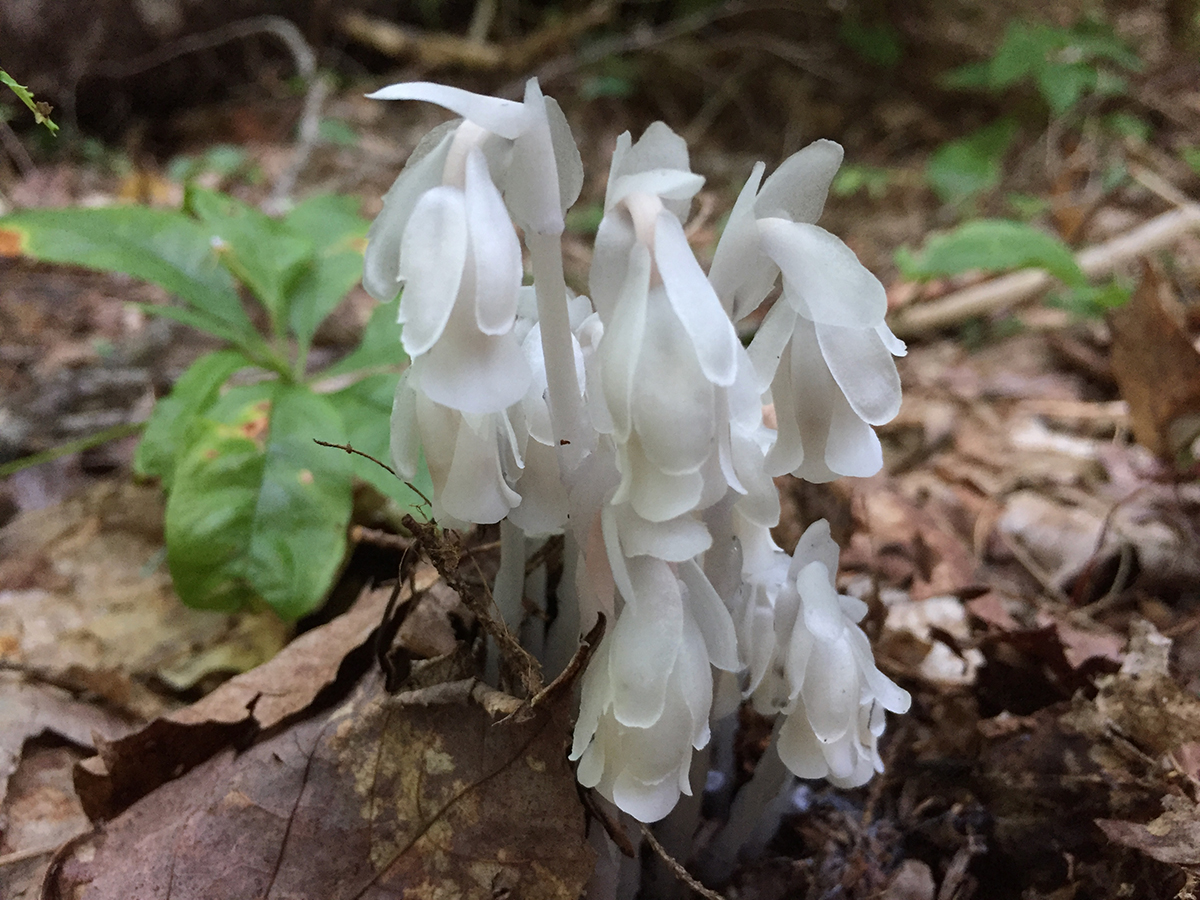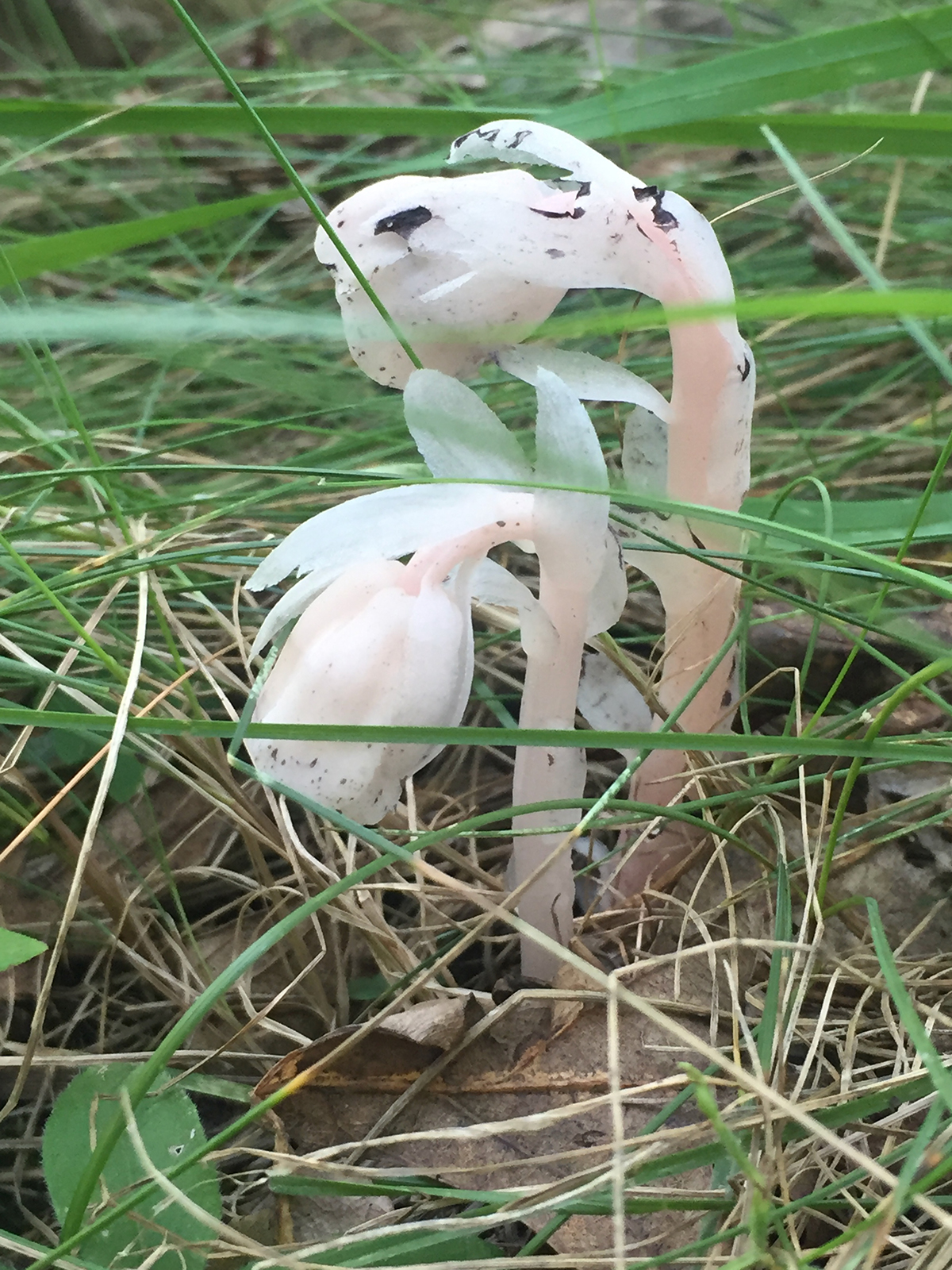September’s waning amount of daylight becomes evident with progressively earlier sunsets. We will reach the autumnal equinox on Sept. 22. All life responds to this increasing vail of darkness in the northern hemisphere. Migratory birds and insects turn south and head towards the equator (or beyond) to benefit from the lengthening days on the southern half of the planet. Plants don’t have that ability, so they wind down their growing cycle and prepare to go dormant for the season. One peculiar plant is a fitting posterchild for both the complexities of nature and the symbolism of the darkening hemisphere: The Ghost Pipe.
Its scientific name is Monotropa uniflora, but it goes by several common names including Ghost Pipe, Ghost Plant, and Indian Pipe. It is a peculiar vascular plant in that it has no chlorophyl and its ghostly white color is a striking feature. We all learned in grade school that plants use chlorophyl to convert sunlight into food for the plant. So how does Ghost Pipe buck the trend in the plant kingdom? In the late 1800s a German botanist theorized that many plants interact with microscopic soil fungi. These soil fungi created threadlike underground structures he surmised formed a “mycorrhizal network” that allowed green plants and fungi to share nutrients and water. It was largely unknown how a non-green plant, such as Ghost Pipes, could form a beneficial association with fungi since neither were able to produce nutrients from sunlight. In the 1960s a Swedish botanist was able to prove that these mycorrhizal networks were not just a simple connection between two species, but rather a network consisting of several species chaining together. In the case of Ghost Pipe, their roots connect with several species of gilled fungi that also associate with the root system of trees. So, the tree benefits the fungi, and the fungi passes through benefits to the Ghost Pipe. The term mycohetrotroph was coined to describe this complex form of plant parasitism.

Monotropa uniflora, known as Ghost Pipe, growing in Sylvania National Wilderness Area, Upper Peninsula, Mich.
MIKE MILLER
Ghost Pipes send up flower stalks in late summer, especially after rainfall. Several white stalks will come up together each topped by a single white flower. Small scale-like leaves are also adorned along the stem. The flowers bend over, resembling an upside-down pipe. They provide nectar and pollen and are frequented by several species of bumble bees. As seeds mature, the flowers bend upright to the sky and the plant dries to form a black stalk and upright seed pod. It is a plant that is easy to spot along the wooded bluffs of the Illinois River. It is a good indicator of high quality and ecologically diverse woodlands. It’s unique relationship with trees and fungi makes it nearly impossible to try to grow in a garden. Since it is depended on a complex arrangement of associate species, it usually doesn’t grow in one place very long. It is a fleeting view, best savored today, for tomorrow it will be gone.
American poet Emily Dickenson often referred to Ghost Pipe in her early poetry. She was an avid botanist and started pressing herbarium specimens as a teen. Enchanted by the plant’s “almost supernatural” appearance, she considered it “the preferred flower of life.” Her artist’s mind knew there was much more to know about this ghostly plant. Her first published poetry book featured a drawing of Ghost Plant on its cover. Appropriately, since it was published shortly after her death. “That it will never come again,” Dickinson wrote, “is what makes life so sweet.”



Recent Comments